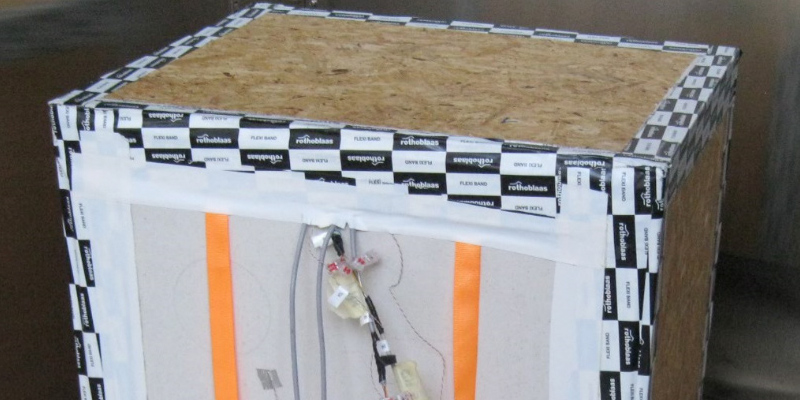Downloads
DOI:
https://doi.org/10.7480/jfde.2018.2.2083Abstract
Vapour barriers and retarders are often needed to improve the hygro-thermal performance of the building envelope. Their use is particularly important in prefabricated timber façades, especially when critical boundary conditions occur. In the literature, very little is known about the actual performance of complete envelope packages that integrate these membranes, since most previous studies focused on the analysis of single components. However, considering the growing interest and use of such timber facade elements, an analysis of the performance of integrated membranes is needed in order to improve the material function curves available in the datasheets to enable the correct design of the whole wall structure. Thus, the novelty of this work lies in the validated analysis of a building envelope sample that integrates membranes with a variable vapour diffusivity.
The focus of the paper is more related to the experimental set-up and particular attention has been paid to the development of a relatively simple testing procedure to analyse the behaviour of such integrated membranes. The study seeks to investigate the behaviour of an envelope component integrating a hygro-variable membrane and a breathable membrane by using computer simulation and experimental facilities.
A thermo-hygrometric analysis of the element has been performed in Delphin, and an experimental methodology is presented, aiming to validate the numerical model, measuring the temperature and relative humidity in different layers. Two sets of boundary conditions have been accurately chosen as they are critical for the building component in terms of thermal and humidity transmission.
Results show very good agreement for one test condition. For the second condition, the measurement uncertainty was greater. One possible reason for this was the presence of condensate in the measurement box frame caused by the first test run. The experimental set-up developed is a relatively easy-to-replicate layout for the validation of similar complex packages. Compared to previous studies, the experimental set-up used in this research is simpler and less expensive.
How to Cite
Published
Issue
Section
License
Copyright (c) 2018 Riccardo Pinotti, Stefano Avesani, Francesco Babich, Andrea Gasparella, Alice Speranza

This work is licensed under a Creative Commons Attribution 4.0 International License.
Authors or their institutions retain copyright to their publications without restrictions.
References
Campbell, N., McGrath, T., Nanukuttan, S., & Brown, S. (2017). Monitoring the hygrothermal and ventilation performance of retrofitted clay brick solid wall houses with internal insulation: two UK case studies. Case Studies in Construction Materials, 7, 163-179. doi:10.1016/j.cscm.2017.07.002
Guizzardi, M., Derome, D., Vonbank, R., & Carmeliet, J. (2014). Hygrothermal behavior of a massive wall with interior insulation during wetting. Building and Environment, 89, 59-71. doi:10.1016/j.buildenv.2015.01.034.
Litti, G., Khoshdel, S., Audenaert, A., & Braet, J. (2015). Hygrothermal performance evaluation of traditional brick masonry in historic buildings. Energy and Buildings, 105, 393-411. doi:10.1016/j.enbuild.2015.07.049
Lucas, F., Adelard, L., Garde, F., & Boyer, H. (2001). Study of moisture in buildings for hot humid climates. Energy and Buildings, 3(4), 345-355. doi:10.1016/S0378-7788(01)00115-3
Rothoblaas. (2017, September 29). Rothoblaas catalogue. Retrieved from https://www.rothoblaas.it/cataloghi-rothoblaas
